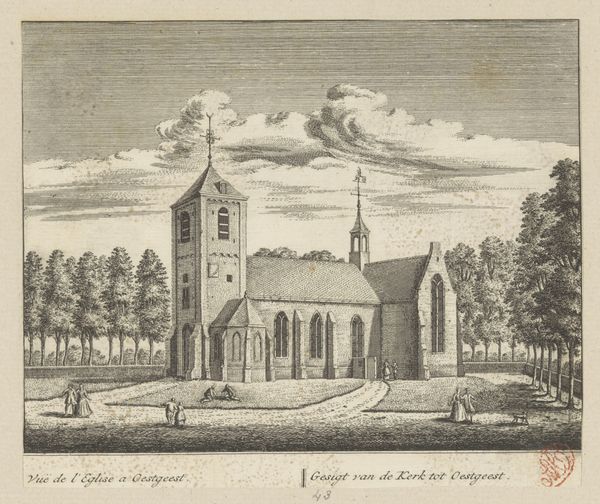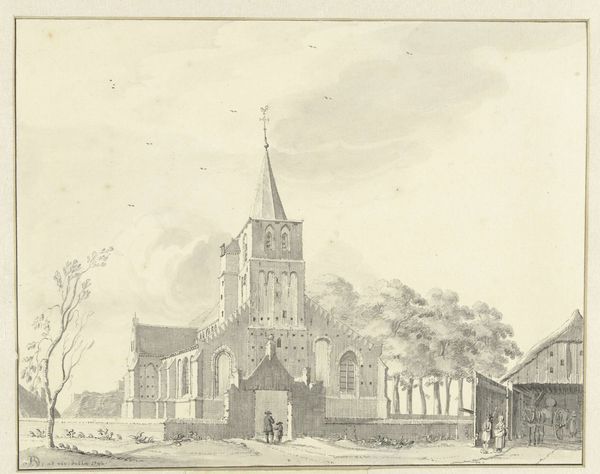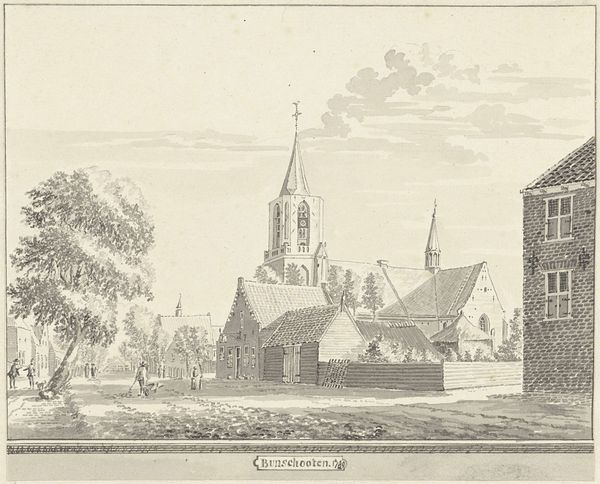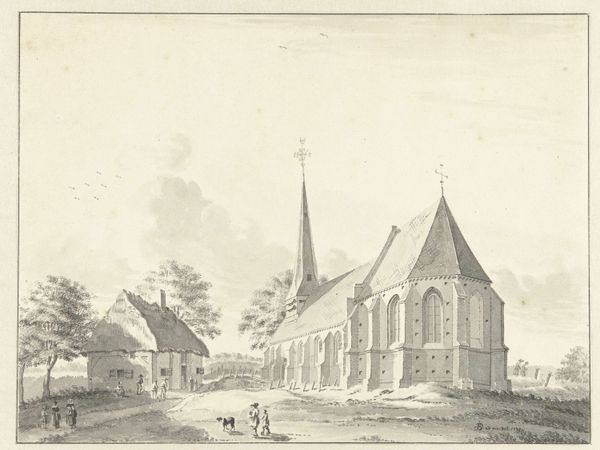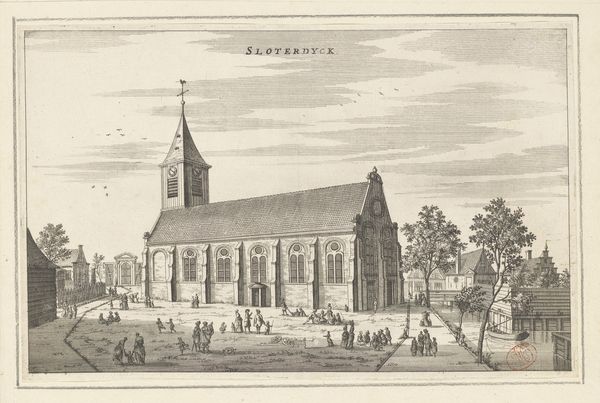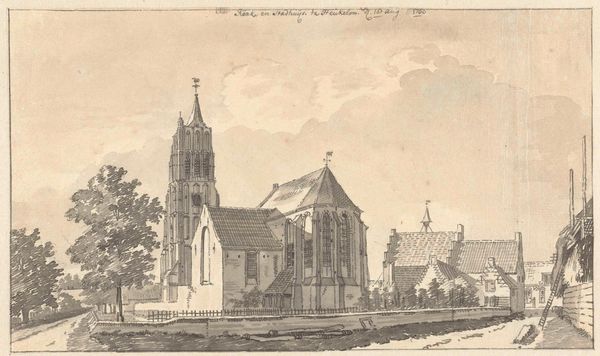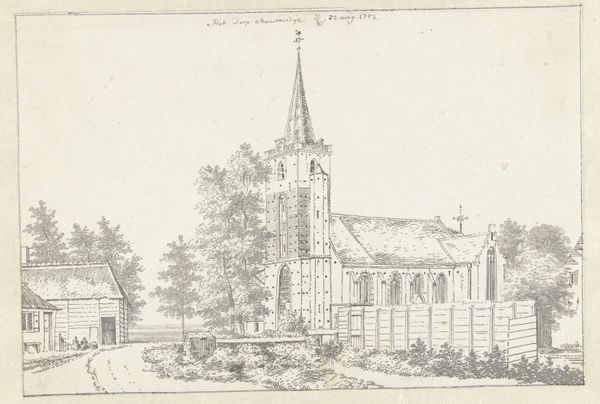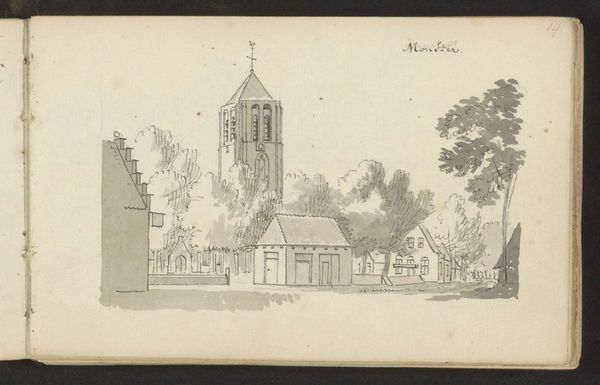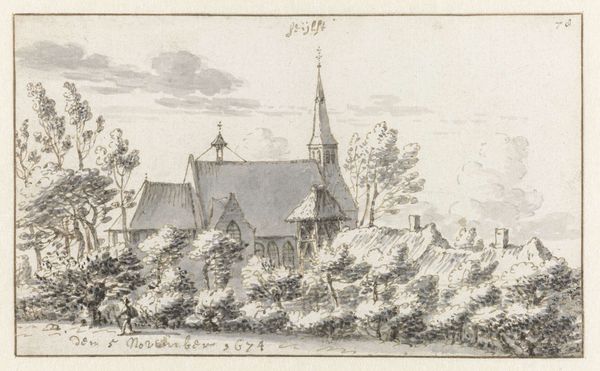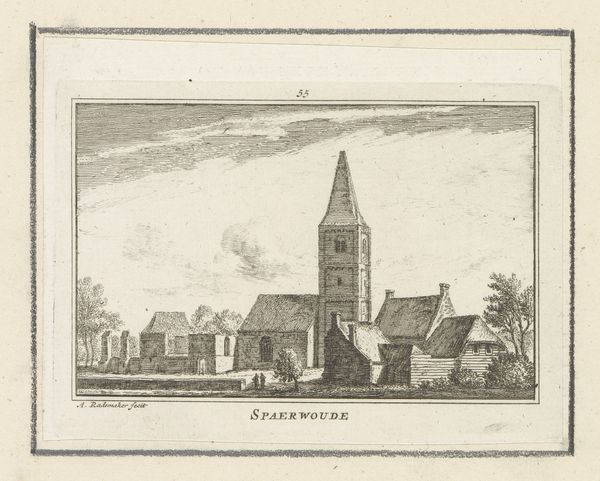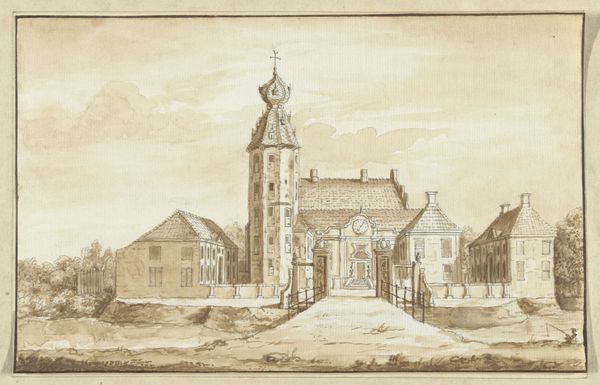
drawing, etching, ink, pen, architecture
#
architectural sketch
#
drawing
#
aged paper
#
quirky sketch
#
baroque
#
etching
#
old engraving style
#
sketch book
#
landscape
#
etching
#
personal sketchbook
#
ink
#
pen-ink sketch
#
pen work
#
architecture drawing
#
pen
#
cityscape
#
architecture
Dimensions: height 153 mm, width 190 mm
Copyright: Rijks Museum: Open Domain
Editor: This is "De kerk te Ankeveen," a 1723 pen and ink drawing by F. Berhuyzen. The sepia tones and delicate lines give it a peaceful, almost wistful quality. What strikes you most about this piece? Curator: I'm immediately drawn to the way Berhuyzen documents the landscape. Consider the 18th century's religious climate. The Ankeveen church wasn't merely a building, it was a symbol of power and presence in its community. How do you think this sketch reflects or perhaps subtly critiques that power dynamic? Editor: That's a perspective I hadn't considered. I was focused on the aesthetic, the details of the architecture, and the almost casual rendering of the surrounding landscape. Curator: Exactly. Look closely at the placement of the church within the broader setting. Is it imposing and separate, or integrated with the land and community life around it? Is there perhaps even something imperfect or provisional about the sketch’s aesthetic compared to the permanent and ordained social position of the church it depicts? The choice of the medium is particularly interesting: a sketch has different social implications than, say, a painting of the church. Editor: I see what you mean. The church is prominent, yes, but the surrounding details are just as important. Maybe Berhuyzen is pointing out the tension, or perhaps the interconnectedness, between religious institutions and everyday life. Curator: And what does it mean that the artist included a single home in the background? How is this sketch in conversation with larger ideas of social hierarchy, the role of religion in everyday life, or perhaps an emergent secularity of the 18th century? Editor: So, looking at art like this drawing helps us understand more than just architectural history; it reveals the intersection between faith, social structures, and individual expression. I’ve certainly learned a new way of seeing! Curator: Indeed. It encourages us to engage with the past not as a fixed entity, but as a complex web of social relationships constantly in flux.
Comments
No comments
Be the first to comment and join the conversation on the ultimate creative platform.

